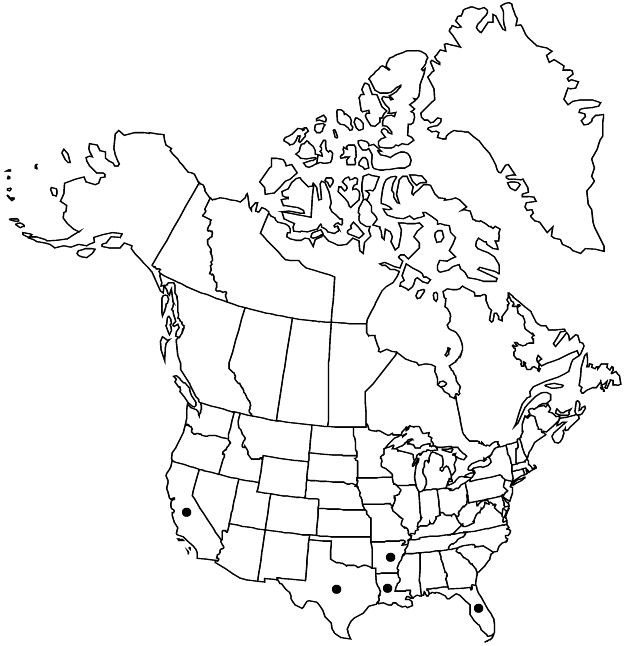Euphorbia graminea
Select. Stirp. Amer. Hist., 151. 1763.
Herbs, usually annual, rarely perennial, with slender, rarely tuberous, taproot. Stems erect or ascending, branched, 30–80 (–110) cm, strigillose or glabrescent, sharply angled. Leaves usually alternate, sometimes some opposite; stipules usually 0.2–0.5 mm, rarely rudimentary; petiole 0.4–5.9 mm, strigillose; blade ovate, elliptic, linear-elliptic, or oblong, 10–83 × 3–39 mm, base attenuate, rounded, or cuneate, margins entire, apex acute or obtuse, surfaces strigillose; venation occasionally obscure on narrow leaves, midvein conspicuous. Cyathia in usually terminal, rarely axillary, dichasia, distal dichasial bracts often white; peduncle 0.4–4.5 mm (to 15 mm at first node of inflorescence), glabrous. Involucre campanulate or obconic, 1–1.8 × 0.8–1.7 mm, glabrous or strigillose toward rim; glands (1–) 2–4, yellow to greenish, elliptic or oblong, 0.1–0.3 × 0.2–0.4 mm; appendages white to tinged purple, ovate and often hoodlike or forming narrow rim around distal margin of gland, 0.3–1.6 × 0.4–0.9 mm, entire. Staminate flowers 30–40. Pistillate flowers: ovary glabrous; styles 0.7–1 mm, 2-fid from 1/2 to nearly entire length. Capsules ovoid-oblate, 2.5–3 × 3–3.5 mm, glabrous; columella 1.6–1.9 mm. Seeds gray, brown, or nearly black, ovoid, circular or weakly angled in cross-section, 1.5–1.7 × 1.3–1.5 mm, coarsely tuberculate with longitudinal rows of shallow pits; caruncle absent or punctiform, 0.1–0.2 mm.
Phenology: Flowering and fruiting year-round.
Habitat: Disturbed, weedy, or urban areas.
Elevation: 0–500 m.
Distribution

Introduced; Ark., Calif., Fla., La., Tex., Mexico, Central America, South America, also in West Indies, Asia, Pacific Islands
Discussion
Euphorbia graminea occurs natively from northern South America to northern Mexico. The species is a variable and taxonomically complex entity whose boundaries are not well defined and are in need of further study. Euphorbia graminea is often weedy and has recently become established in warmer areas of the southern United States, where it will likely become more common in the future. In recent years, a cultivar of E. graminea has found considerable horticultural success and is marketed under the trade name "Diamond Frost."
Selected References
None.
Lower Taxa
"connate" is not a number. "distinct" is not a number."entire" is not a number.